Part 1: Family matters – sawfish stories
Why is family important? The answer to this, as you might expect, is rather complex. For us, family plays a pivotal role in shaping one’s values, beliefs, sense of identity and worldview. Families can teach us about love, security, relationship building and coping with life’s day-to-day struggles. But what about sharks and rays? More specifically, what can families teach us about sharks and rays? Hello, I’m Jack. In 2025, I became a recipient of the Keystone Grant, administered by the Save Our Seas Foundation, to answer this very question for two of the world’s most threatened marine species: the dwarf sawfish (Pristis clavata) and the green sawfish (Pristis zijsron).
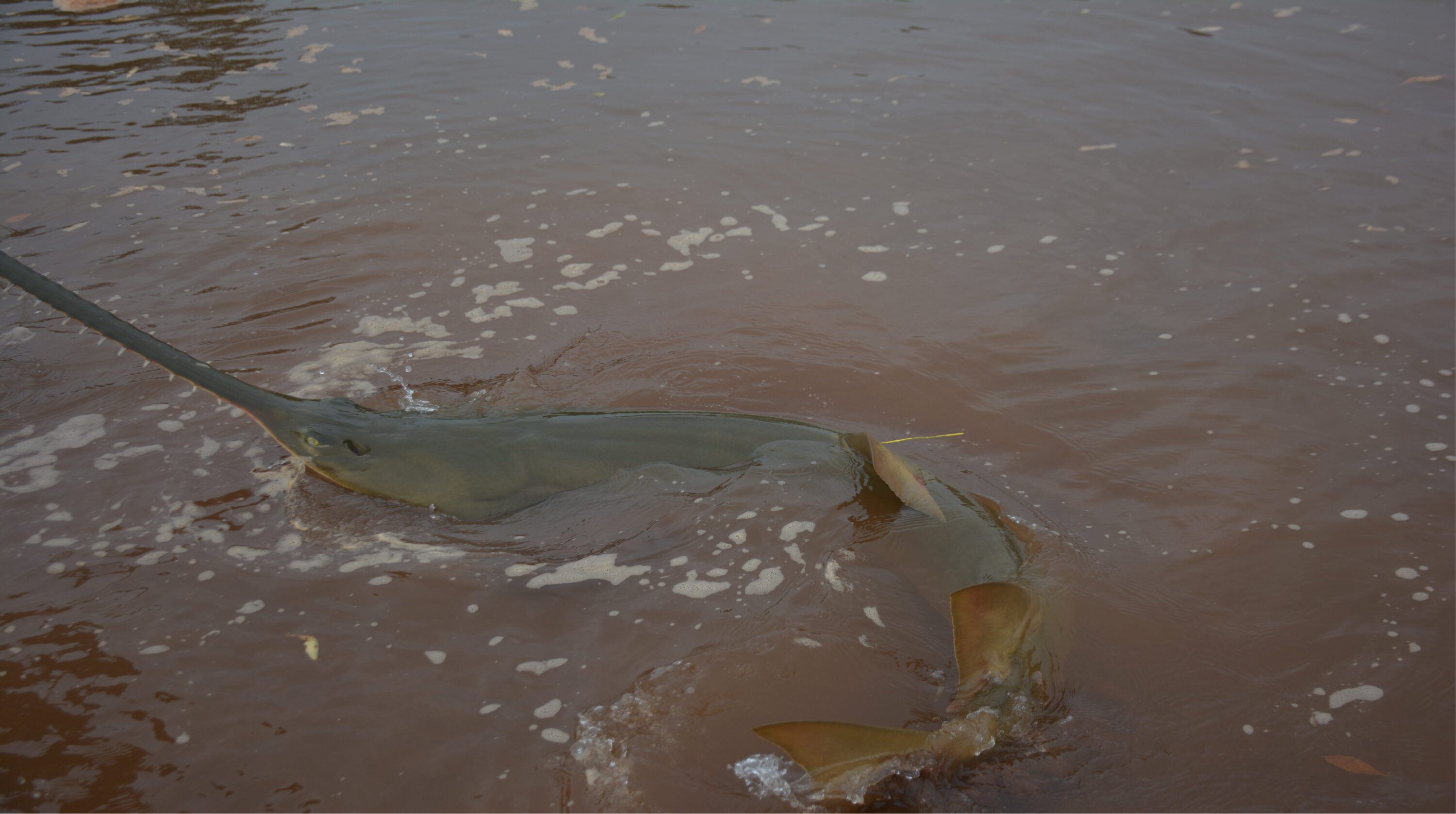
The green sawfish (Pristis zijsron) is one of the world's most threatened fish species. Photo © David Morgan.
Named for their distinct, saw-like rostrum, the sawfishes are among the largest and most iconic of rays. Today, all five extant sawfish species are listed as ‘Critically Endangered’ on the IUCN Red List of Threatened Species, having suffered massive population declines and range contractions, due to overexploitation by fisheries and habitat loss. Northern Australia is a key stronghold for several sawfish species and contains some of the last viable populations of dwarf sawfish and green sawfish in the world. However, even in northern Australia, where fishing pressure and coastal disturbance is relatively low compared to many other areas throughout the Indo-West Pacific, sawfish populations are presumed to be in decline. What’s more, conservation efforts are constantly hindered by how little we know about these incredible creatures and their life histories. How do we fix this though? Well, the answer to this may very well lie in the importance of family.
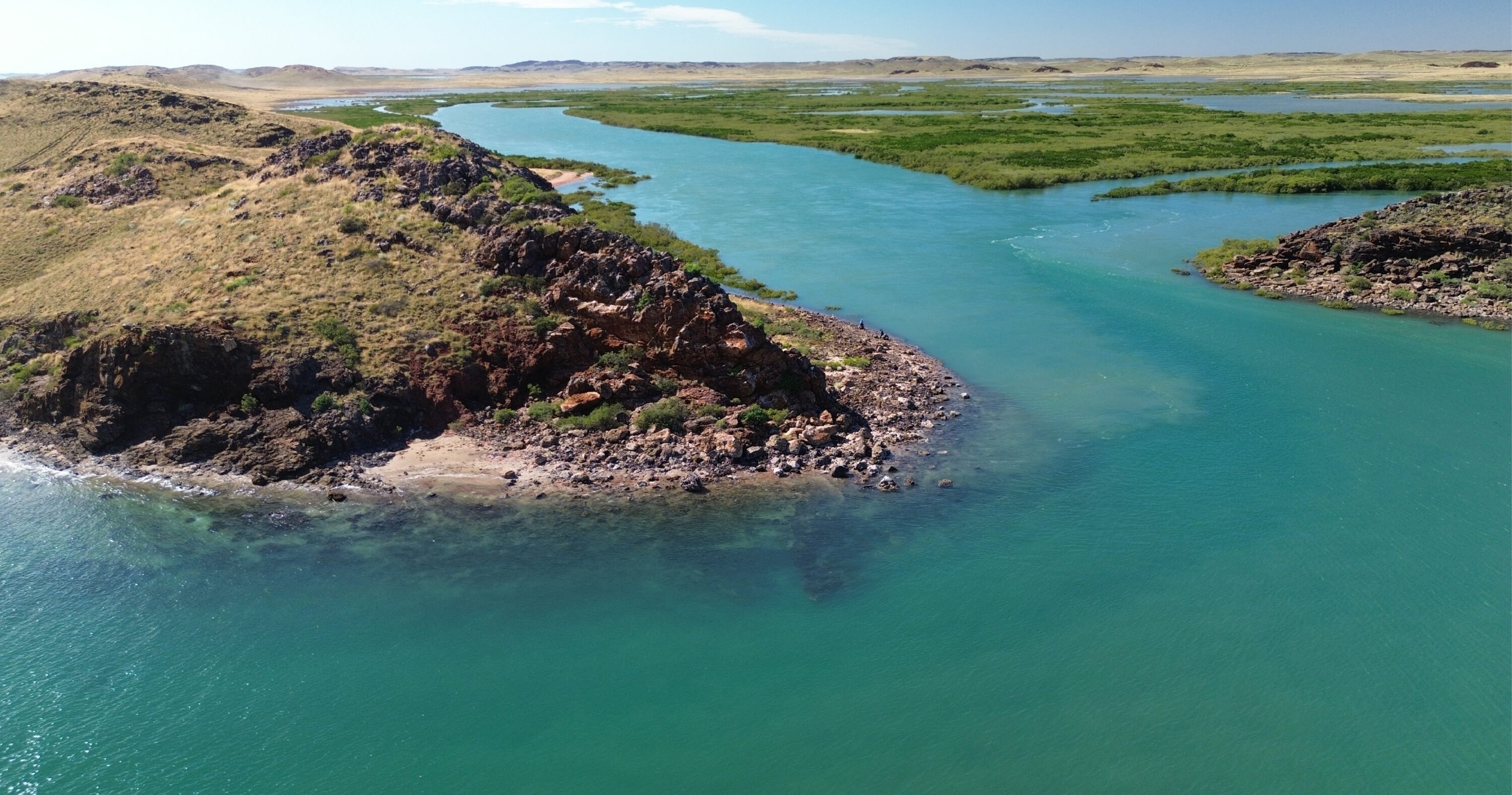
The remote coastline of northern Australia is one of the world's last strongholds for dwarf sawfish and green sawfish. Photo © Jack Ingelbrecht
You see, kinship (i.e., coancestry) information is incredibly useful to all sorts of scientific disciplines. For example, the distribution of close relatives within and among populations can provide insight into movement, reproductive strategies and various other behaviours. It has also given rise to several methods for estimating effective population size, one of the most important parameters in conservation biology, from the proportion of close relatives within a sampled group. These methods are based on the simple premise that if you sample any two individuals at random from a population, those individuals are more likely to be related if the size of the population is small.
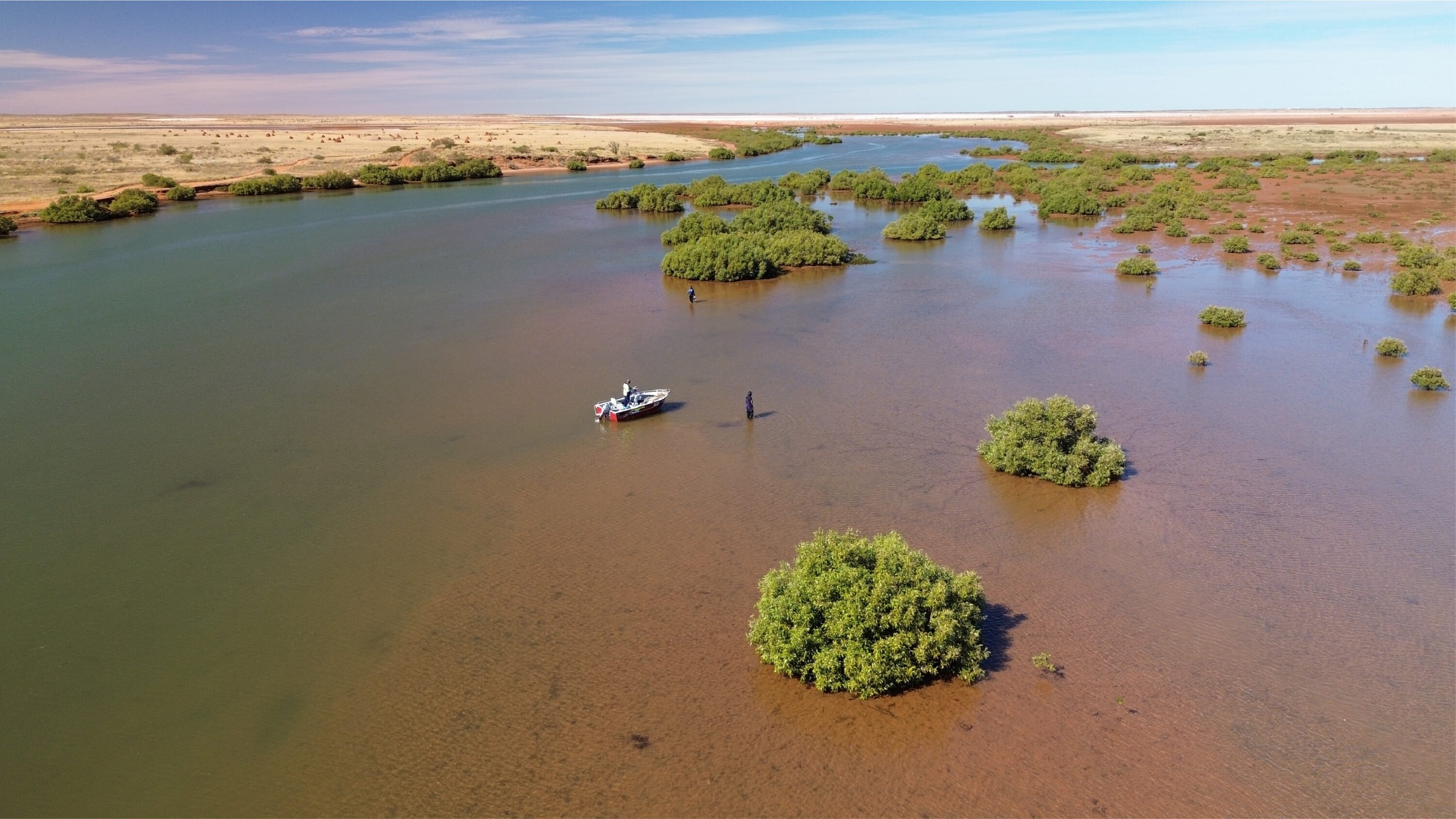
Researchers scour the shallows of a tidal creek in Western Australia for sawfish. Photo © David Morgan
Over the next three years, please follow along as my colleagues and I scour Western Australia’s vast northern coastline, to capture and collect tissue from as many dwarf sawfish and green sawfish as we can. Our objective? To use that tissue as a source of genetic data, which will allow us to infer relatedness (i.e., kinship) among sawfish, based on genetic similarities between individuals. Our hope is that this will reveal all sorts of new information on sawfish life histories and even allow us to provide estimates of effective population size for dwarf sawfish and green sawfish, something that is yet to be accomplished for any sawfish species in Australia, to date. So, what can families teach us about sharks and rays? Stay tuned. The answers may surprise you.
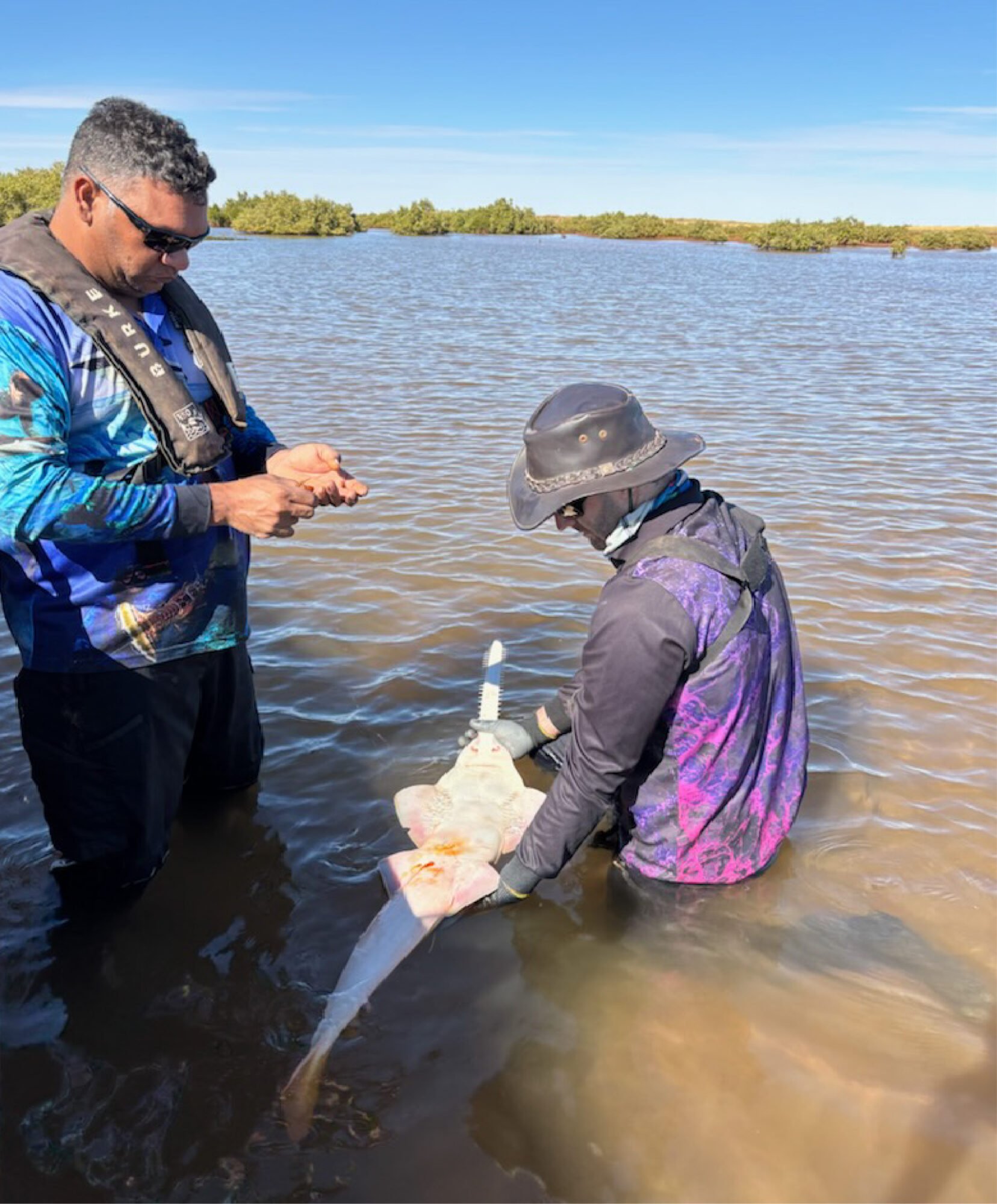
Researchers Travis Fazeldean and Jack Ingelbrecht handle a juvenile green sawfish at Four Mile Creek, Western Australia. Photo © David Morgan
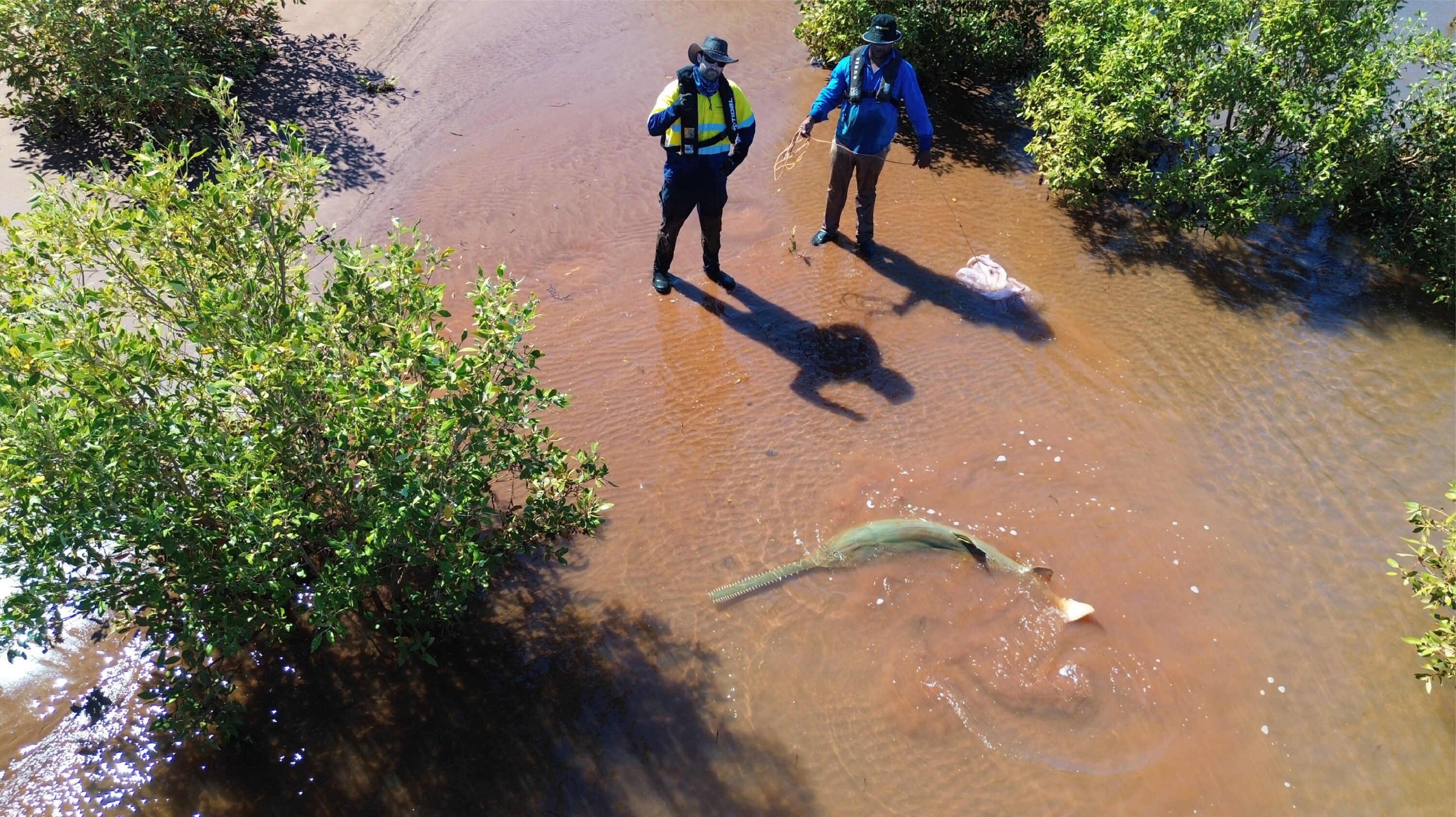
Researchers release a juvenile green sawfish in the Ashburton River, Western Australia. Photo © David Morgan
